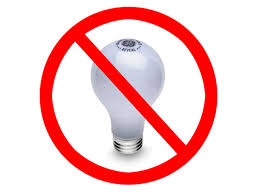Make the switch or ban the bulb? Green Philippines
At the recent kick-off of the government’s campaign to make the Philippines incandescent bulb-free by 2010, about 2,000 poor households in Manila’s Tondo district received free energy-saving compact fluorescent lamps (CFLs) in exchange for their incandescent bulbs.


About 13 million more CFLs will be distributed nationwide in the coming months under the Philippine Energy Efficiency Project (PEEP), made possible through a loan agreement between the Asian Development Bank and our government.
PEEP also calls for a change in government office buildings and public lighting systems, create a lamp waste management facility, establish an energy service company that will provide financial and technical support to companies planning to reduce energy consumption, and initiate a ‘green building’ rating system.
In addition, ADB is working on a carbon credit purchase agreement with the Philippine government. The program is seen to reduce national carbon dioxide emissions by 300,000 tons a year, allowing the Philippines to receive approximately 300,000 tons of certified emission reduction (carbon market) credits annually.
Undeniable benefits
Incandescent bulbs, in the version that Thomas Edison designed, has been replaced by CFLs in terms of energy efficiency. While there are questions to the luminescence claims of some CFL manufacturers, the savings on fuel costs cannot be denied.
The country’s “Switch to CFL” campaign, considered the first of its kind in Asia, will save the country P5 billion in fuel costs each year. Each incandescent bulb replaced by a CFL is touted to save as much as P4,000 worth of electricity.
Incandescent bulbs are known to use only 20 percent of the electricity to produce light, while the remaining 80 percent is wasted as heat. In contrast, CFLs use most of their electricity input to produce light. An average incandescent lamp’s life is only about 800 hours, while high-quality CFLs that will be used in the campaign will have a life of 10,000 hours, with a two-year warranty.
Resistance to switching
Even with all the benefits stated above, the switch to CFLs has encountered resistance especially among low-income households because of its higher replacement cost. A 100-watt incandescent bulb would only cost around P20, while a CFL would range from P100 to P200, depending on the wattage.
The modern CFL design has been with the world since the 1973 oil crisis, but only recently had mass manufacturing designs and techniques been able to bring down unit costs to substantially more affordable levels, although still on the high side.
Because of the CFL’s marked reduction in energy use, the push to implement a ban on incandescent bulb use has been gaining popularity. Europe and Australia have already announced a ban on incandescent in 2010. Canada is also working to ban the bulb next year.
The Philippines has expressed its intention to join the 2010 bandwagon but has yet to demonstrate political will in actually moving forward the proposed initiative.
Health and environment concerns
Not everything is rosy with CFLs though. Environmentalists are critical of the mercury found in it. About 1.5 mg to 5 mg of mercury, a highly toxic pollutant, is found inside the glass tubing. If the glass is broken, environmentalists contend this will make its way in the air and water.
Many countries are still grappling with the issue of CFL disposal, but if this is properly handled, the threat of mercury escaping to the environment could be avoided. Mercury is a known neurotoxin that can cause kidney and brain damage.
The energy department should start an information campaign on how best to handle used bulbs, even if they estimate the lifespan of those that have been given away – and will be distributed – to go beyond 2015. Read original article here http://www.philstar.com/Article.aspx?articleId=511186&publicationSubCategoryId=66
0 comments:
Post a Comment